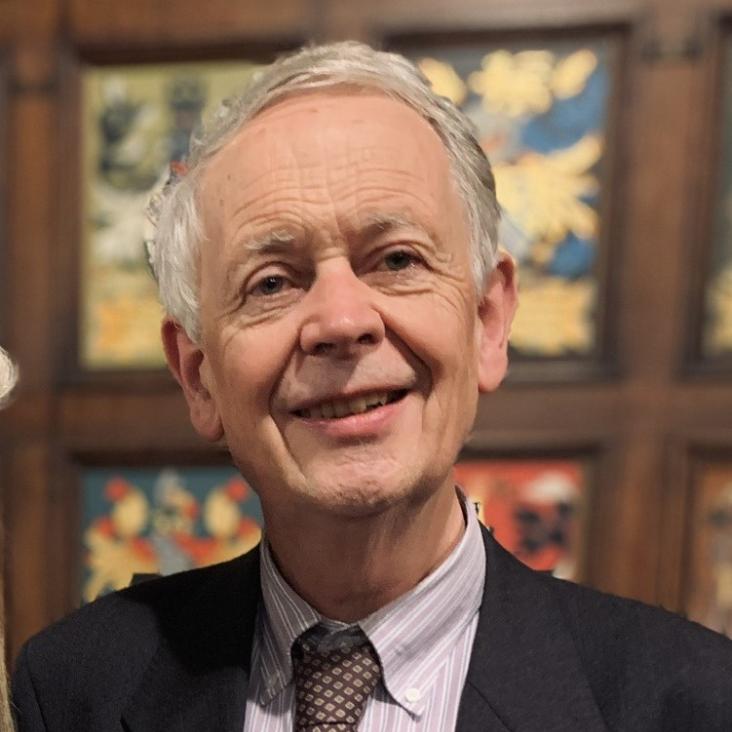The age of the solar neighbourhood
Monthly Notices of the Royal Astronomical Society 318:3 (2000) 658-664
Abstract:
High-quality Hipparcos data for a complete sample of nearly 12 000 main-sequence and subgiant stars, together with Padua isochrones, are used to constrain the star formation history of the solar neigbourhood and the processes that stochastically accelerate disc stars. The velocity dispersion of a coeval group of stars is found to increase with time from ∼8 km s-1 at birth as t0.33. In the fits, the slope of the initial mass function (IMF) near 1 M⊙ proves to be degenerate with the rate at which the star formation rate declines. If the slope of the IMF is to lie near Salpeter's value, -2.35, the star formation rate has to be very nearly constant. The age of the solar neighbourhood is found to be 11.2 ± 0.75 Gyr with remarkably little sensitivity to variations in the assumed metallicity distribution of old disc stars. This age is only a gigayear younger than the age of the oldest globular clusters when the same isochrones and distance scale are employed. It is compatible with current indications of the redshift of luminous galaxy formation only if there is a large cosmological constant. A younger age is formally excluded because it provides a poor fit to the number density of red stars. Since this density is subject to a significantly uncertain selection function, ages as low as 9 Gyr are plausible even though they lie outside our formal error bars.Kinematics from spectroscopy with a wide slit: detecting black holes in galaxy centres
ArXiv astro-ph/0010379 (2000)
Abstract:
We consider long-slit emission-line spectra of galactic nuclei when the slit is wider than the instrumental PSF, and the target has large velocity gradients. The finite width of the slit generates complex distributions of brightness at a given spatial point in the measured spectrum, which can be misinterpreted as coming from additional physically distinct nuclear components. We illustrate this phenomenon for the case of a thin disc in circular motion around a nuclear black hole (BH). We develop a new method for estimating the mass of the BH that exploits a feature in the spectrum at the outer edge of the BH's sphere of influence, and therefore gives higher sensitivity to BH detection than traditional methods. Moreover, with this method we can determine the black hole mass and the inclination of the surrounding disc separately, whereas the traditional approach to black-hole estimation requires two long-slit spectra to be taken. We show that with a given spectrograph, the detectability of a BH depends on the sense of rotation of the nuclear disc. We apply our method to estimate the BH mass in M84 from a publicly available spectrum, and recover a value 4 times lower than that published previously from the same data.Secular Evolution of the Galactic Disk
ArXiv astro-ph/0009331 (2000)
Abstract:
In the solar-neighbourhood, older stars have larger random velocities than younger ones. It is argued that the increase in velocity dispersion with time is predominantly a gradual process rather than one induced by discrete events such as minor mergers. Ephemeral spiral arms seem to be the fundamental drivers of disk heating, although scattering by giant molecular clouds plays an important moderating role. In addition to heating the disk, spiral arms cause stars' guiding centres to diffuse radially. The speed of this diffusion is currently controversial. Data from the Hipparcos satellite has made it clear that the Galaxy is by no means in a steady state. This development enormously increases the complexity of the models required to account for the data. There are preliminary indications that we see in the local phase-space distribution the dynamical footprints of long-dissolved spiral waves.Supernovae and the IGM
ArXiv astro-ph/0008365 (2000)
Abstract:
An energetic argument implies that a galaxy like the Milky Way is blowing a powerful wind that carries away most of the heavy elements currently synthesized and has impacted the IGM out to at least 180 kpc. Rich clusters of galaxies appear to be closed systems in which most heavy elements are ejected from galaxies. More supernovae are required than the yield of core-collapse SNe from a Salpeter IMF. X-ray observations imply that the IGM in groups and clusters as been strongly preheated. SNe probably cannot supply the required energy, which must come from AGN.Is galactic structure compatible with microlensing data?
Astrophysical Journal 537:2 PART 2 (2000)


